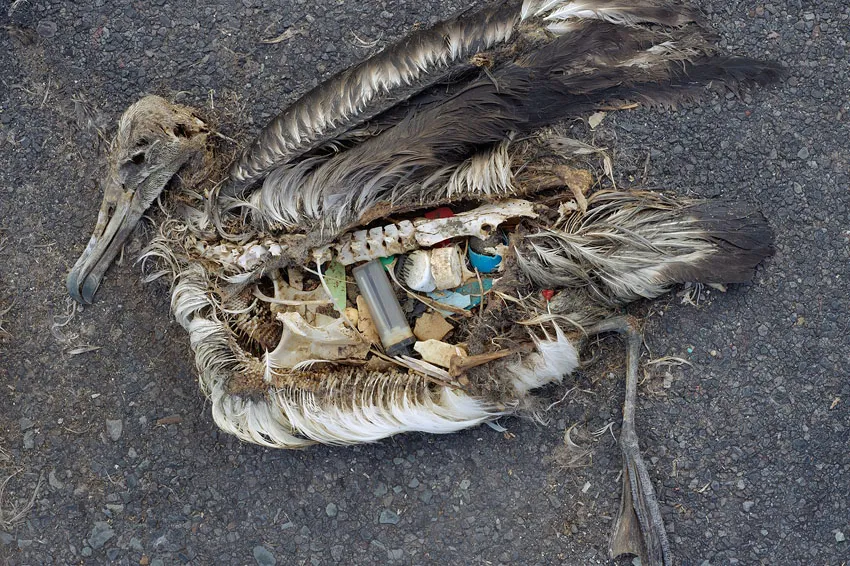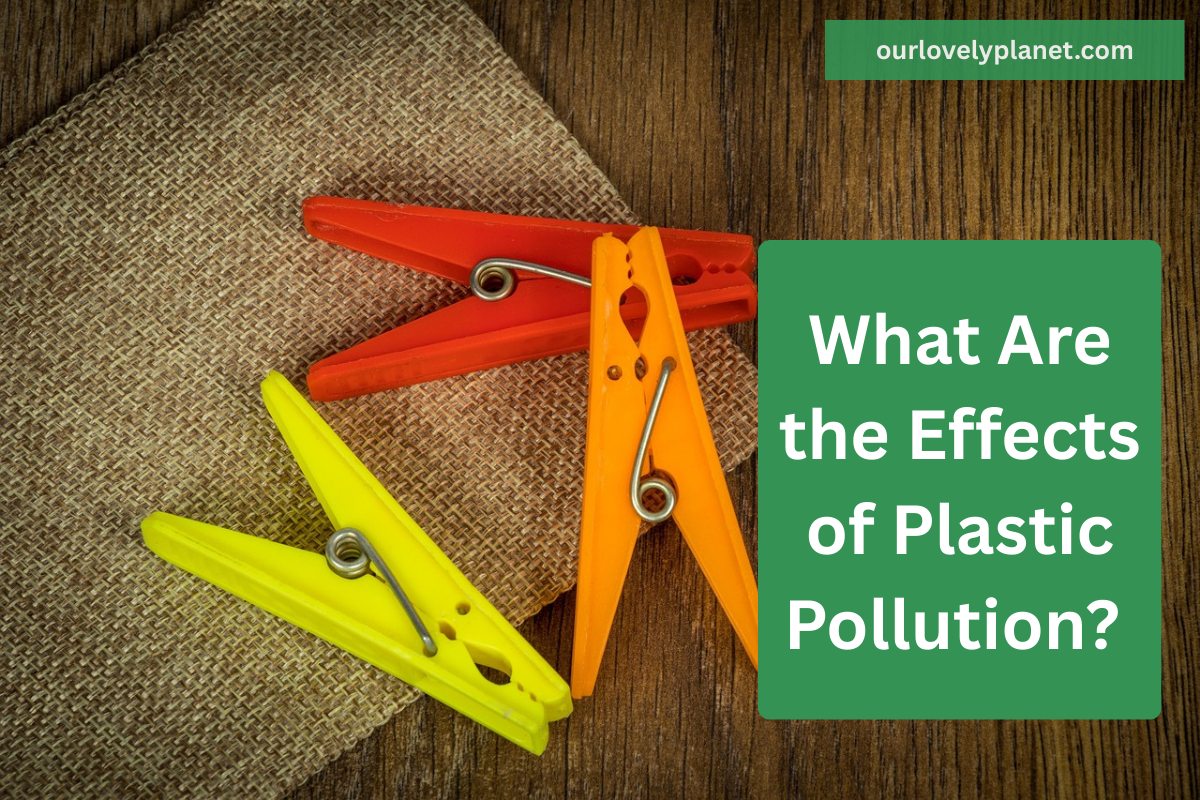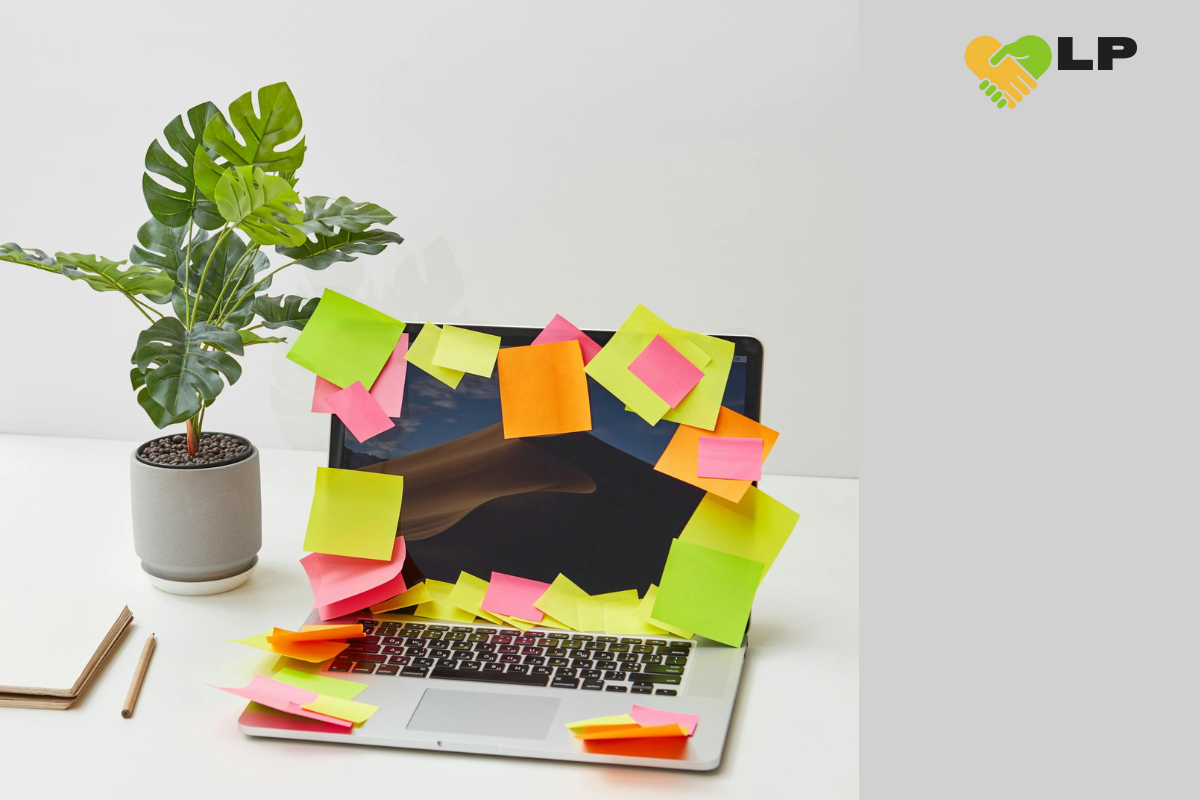Plastic pollution effects are showing up everywhere. They’re not just ruining beaches or floating in the ocean. They’re in the water we drink, the food we eat, and the air we breathe. They’re even in our bloodstreams.
Every year, the world creates over 430 million metric tons of plastic, according to the United Nations. Shockingly, two-thirds of that is cast as waste after just a single use. Most of it isn’t recycled, reused, or safely disposed of. It just sticks around, breaking into smaller pieces, and spreading far beyond what we can see.
This isn’t just an environmental issue. It’s a full-body, full-planet issue. Let’s walk through exactly how plastic pollution is impacting wildlife, oceans, soil, human health, the economy, and even our emotional well-being.
1. Plastic Pollution Effects On Wildlife
Plastic is killing animals. It’s not subtle or slow. It’s violent and widespread.
Over 1 million seabirds and more than 100,000 marine mammals die every year because of plastic pollution. Some starve to death with stomachs full of plastic they thought was food. Others drown or suffocate after getting tangled in discarded fishing nets, six-pack rings, or plastic bags.
One heartbreaking example is albatross chicks on Midway Island in the Pacific. Their parents feed them bits of plastic, thinking it’s fish. These chicks often die before they can fly, their tiny stomachs packed with plastic.

Plastic debris also floats on the ocean surface and breaks into small pieces called “nurdles.” These resemble fish eggs and are often mistaken for food by turtles, whales, and seabirds. The result is internal damage, blocked intestines, and malnutrition.
This is not a rare event. It’s happening on every coastline, in every ocean, and now in some of the most remote places on Earth.
2. Soil and Land Contamination
We often think of plastic as a marine problem, but it’s poisoning our land too.
Farmers around the world use plastic mulch films to conserve moisture and prevent weeds. But these thin films break down into microplastics, which linger in the soil long after harvest. Globally, more than 2 million tons of plastic mulch are used annually. Much of it is left behind.
Studies show that microplastics in soil reduce crop productivity, harm earthworms and helpful insects, and interfere with natural nutrient cycles. These plastics also leach harmful chemicals into groundwater, especially in landfills or illegal dumpsites.
There is even growing concern that plastic pollution could enter plants directly. Some lab tests have shown plastic nanoparticles accumulating in the roots and leaves of lettuce, wheat, and other common crops.
3. Impact on Ocean Ecosystems
Plastic waste isn’t just hurting individual animals. It’s destabilizing entire ocean ecosystems.
Over 700 marine species are affected by plastic pollution. When key species, such as plankton or small fish, ingest plastics and experience health problems, the effects ripple up the food chain. Larger predators, including commercial fish like tuna or salmon, end up consuming contaminated prey.
Plastic also smothers coral reefs, reducing their ability to grow and fight off disease. One study found that plastic debris increases the likelihood of coral disease from 4 to 89 percent. Coral reefs support over a quarter of marine life, so this is not a small loss.
Even worse, plastic acts as a vehicle for invasive species and harmful pathogens. Floating plastic trash can carry bacteria or larvae across oceans, introducing them to new ecosystems where they don’t belong.
4. Human Health Risks
We used to think plastic was just bad for the planet. Now we know it’s bad for us too. The chemicals used in plastic manufacturing include bisphenol A (BPA), phthalates, polybrominated diphenyl ethers (PBDEs), and other substances known to interfere with human hormones. BPA, for example, mimics estrogen and has been linked to developmental issues, fertility problems, and even cancer.
Microplastics have been detected in human lungs, bloodstreams, breast milk, and testicular tissue. A recent study from the Netherlands found microplastics in the blood of nearly 80 percent of participants tested.
Seafood lovers are at higher risk. Fish and shellfish can ingest microplastics, which then end up in the human digestive system. Drinking water, both bottled and tap, has also been shown to contain microplastics in cities around the world.
While research is still ongoing, the growing body of evidence points to plastic exposure as a major public health concern. This is especially alarming for infants, children, and pregnant women, and the plastic pollution effects are more likely to be severe in the future if we don’t reduce plastic pollution.
5. Microplastics: The Invisible Threat
Microplastics are plastic fragments less than five millimeters in size. You can’t always see them, but they are absolutely everywhere.
They come from multiple sources. Think synthetic clothing fibers that shed in the wash, plastic packaging that breaks down in the sun, tire dust, cosmetics, and even tea bags made from plastic. One study found that a single load of laundry can release up to 700,000 microfibers into the water.
Researchers have found microplastics in Arctic sea ice, Antarctic snow, mountaintop air, and most recently, in human blood, lungs, and even placentas. A 2019 study estimated that the average person might be ingesting the equivalent of a credit card’s worth of plastic every week.

Once these plastics enter our bodies, they can stay for a long time. While we don’t yet fully understand the long-term effects, early research suggests they may contribute to inflammation, hormone disruption, and immune system damage.
6. Air Pollution from Plastic
Yes, plastic can pollute the air too. In many parts of the world, especially where waste management is lacking, plastic is burned in open fires or backyard pits.
Burning plastic releases toxic gases, including dioxins, furans, and polychlorinated biphenyls (PCBs). These substances are linked to cancer, immune disorders, and respiratory illness.
Children who live near informal waste-burning sites are particularly vulnerable. Breathing in plastic smoke regularly can lead to chronic lung conditions and developmental problems.
Even without burning, plastic manufacturing is a significant source of air pollution. Producing plastics generates more than 850 million metric tons of greenhouse gas emissions each year, equivalent to the output of nearly 200 coal-fired power plants. This means plastic pollution is also making the climate crisis worse.
7. Economic Impact
The financial toll of plastic pollution is staggering. According to UNESCO, plastic pollution causes up to 19 billion US dollars in damage every year to marine ecosystems. That includes cleanup efforts, lost tourism revenue, and reduced fishery yields.
Coastal communities often bear the brunt of these costs. Cities spend millions clearing plastic waste from beaches and waterways. In some countries, plastic-clogged drainage systems worsen flooding, leading to further property damage and public health emergencies.
Only 9 percent of all plastic ever made has been successfully recycled. This means the billions invested in recycling infrastructure often go to waste. In reality, much of what is “recycled” ends up incinerated or shipped overseas.
8. Psychological and Emotional Toll
Plastic pollution doesn’t just damage ecosystems and bodies. It wears on our hearts and minds.
Many people experience eco-anxiety, a chronic fear of environmental disaster. Seeing plastic wash up on your favorite beach or watching sea life struggle in viral videos can create feelings of guilt, grief, anger, and helplessness.
The emotional toll is worsened by the fact that plastic seems unavoidable. Most of us have tried to cut back — carrying reusable bags, avoiding straws, shopping bulk when we can—but still find plastic in almost everything we buy.
This ongoing battle creates burnout. People feel overwhelmed by a system that makes it nearly impossible to live plastic-free, and discouraged when their efforts feel too small to matter.
9. Disproportionate Effects on Marginalized Communities
Plastic pollution doesn’t affect all people equally. Low-income and marginalized communities often suffer the most.
Landfills, incinerators, and petrochemical plants are frequently built near communities of color or economically disadvantaged areas. These communities face higher exposure to air and water pollution, leading to increased rates of asthma, cancer, and other health problems.

In the Global South, countries like the Philippines, Indonesia, and Nigeria have become dumping grounds for plastic waste exported by richer nations. These regions often lack the infrastructure to manage it, leading to open burning, clogged waterways, and dangerous work conditions for informal waste pickers.
This is not just an environmental issue. It’s a social justice issue. And it must be treated as such.
10. A Systemic Problem, Not Just an Individual One
You can bring your own bags, say no to straws, and choose bar soap over bottled shampoo. These things matter. But they’re not enough.
Plastic pollution is a systemic problem driven by industry. Major fossil fuel companies are ramping up plastic production to compensate for falling oil demand. Brands continue packaging everything in plastic because it’s cheap and profitable.
Governments and corporations have placed the burden on individuals to fix a mess they created. Meanwhile, they continue promoting recycling as a solution, even though they know it barely works.
We need stronger regulations, corporate accountability, and bold innovation in materials and packaging. This isn’t about doing everything perfectly. It’s about fighting for systems that stop producing so much plastic in the first place.
The Bottom Line: Plastic Pollution Is Personal
Plastic pollution effects are already here. They’re showing up in our oceans, our food, our water, and even our DNA.
This crisis is not distant. It’s intimate. It’s personal. And it’s one of the defining issues of our time.
But awareness is power. Now that you know the truth, you’re part of the shift. You can push for change, support better policies, and refuse to accept the status quo. You can talk about it, write about it, vote for it, and live in a way that reflects your care.
If you’re not sure where to start, I’ve written a guide just for you: How to Start Living Zero Waste: A Beginner’s Guide. It’s full of realistic tips that won’t overwhelm you.
Because you don’t have to do everything. But you can do something. And that something matters.




Undeniably believe that which you stated. Your favorite justification appeared to be on the web the simplest thing to be aware of. I say to you, I certainly get irked while people consider worries that they just do not know about. You managed to hit the nail upon the top and defined out the whole thing without having side-effects , people could take a signal. Will likely be back to get more. Thanks